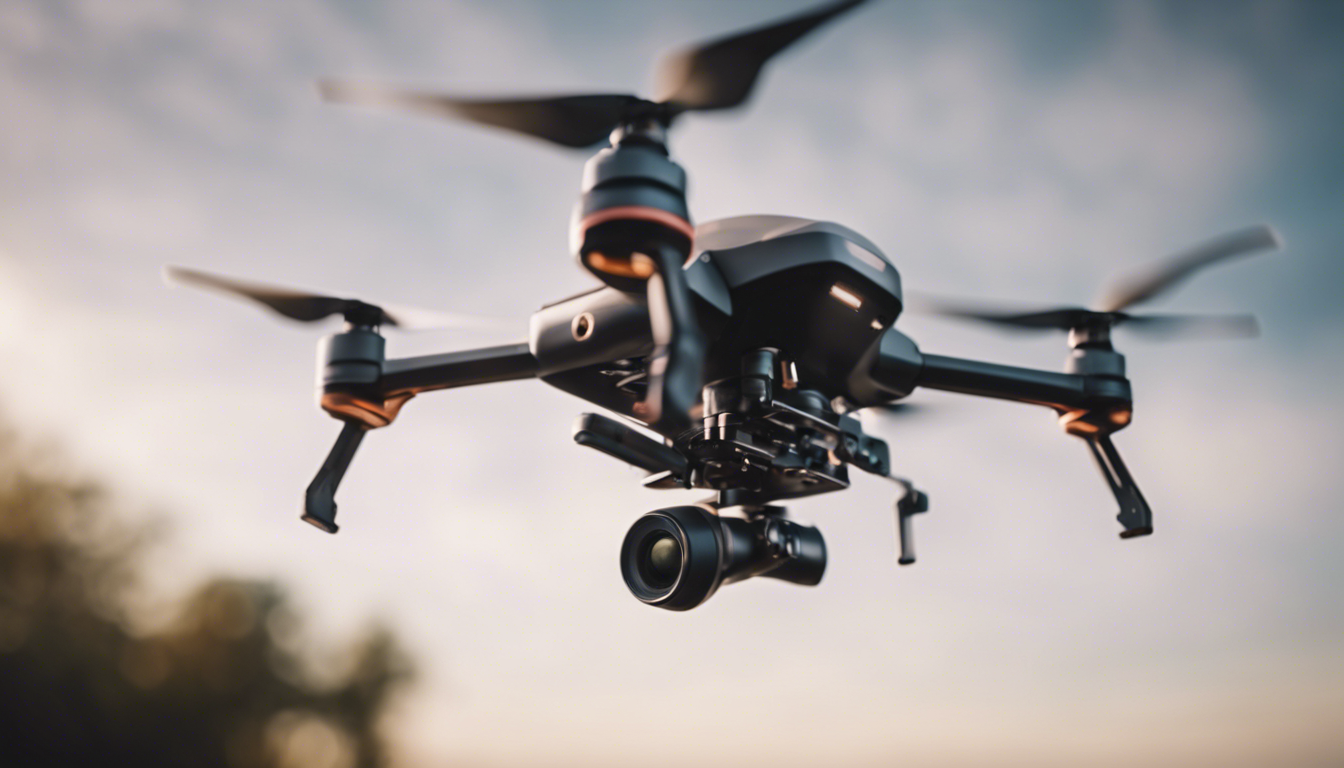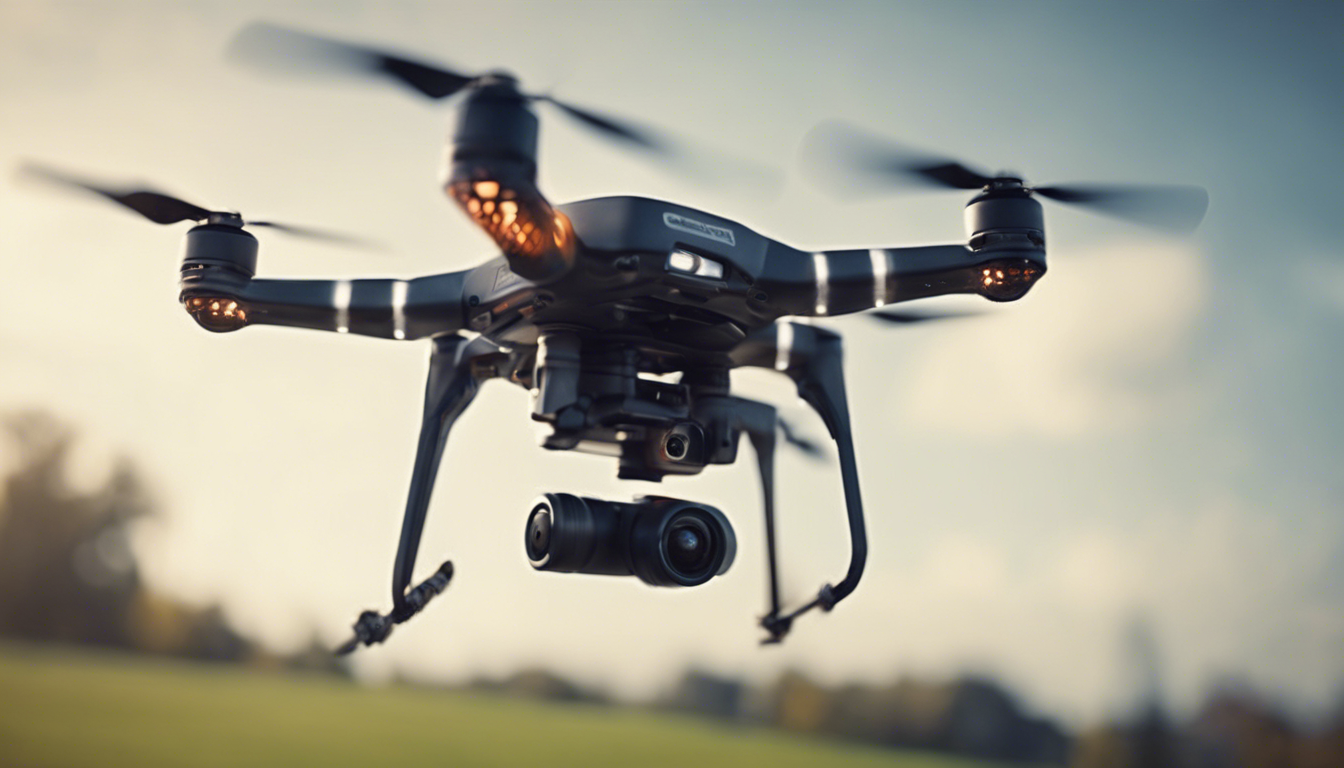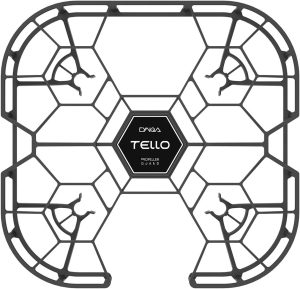
Enhanced telemetry data interpretation
Imagine your drone as a little flying computer, brimming with sensors and data, just waiting to tell you the story of each flight. With a boost from enhanced telemetry data interpretation, that story becomes a blockbuster thriller, chock-full of intricate details and insights. It’s not just about flying anymore; it is about decoding a treasure trove of flight secrets, all hidden in plain sight.
Now, let’s talk about the heartbeat of your drone – telemetry data. That is the nitty-gritty info on speed, altitude, and GPS location that your drone collects. But wait, there’s more! Contemporary drones have upped their game. They’re not just spewing raw data; they are providing context. This is right, context. It’s like the difference between reading a raw script and watching a star-studded performance on screen.
Why does this matter, you ask? Well, with enhanced interpretation tools, pilots can now unlock fascinating patterns in flight behavior. Ever wondered how wind currents are playing with your drone mid-flight? Or perhaps you’re curious about the intricate ballet between your drone’s battery life and its aerobatic maneuvers? Enhanced telemetry dives into this, turning complex data into simpler, actionable insights.
But hold on, it gets better. We’re seeing a surge in innovative software that transforms these massive data streams into vivid 3D maps, heatmaps, and even predictive models. Imagine watching your drone flight replayed not just as a simple trajectory, but as a dynamic 3D model, complete with annotations for every twist and turn.
These high-tech tools do the heavy lifting, allowing hobbyists and professionals alike to optimize flight paths, increase safety, and even predict equipment failure before it happens. Think of it as the crystal ball of the drone world. This isn’t just about being reactive; it is about becoming preemptive masters of the skies. Predictive maintenance schedules based on nuanced data interpretation can save time and money, and who doesn’t love that?
But here’s a little secret – data doesn’t lie. So, when you’re scratching your head wondering why your drone acted up, a deep dive into telemetry could reveal hidden issues like subtle electromagnetic interferences or sneaky software bugs.
And for the competitive souls out there, enhanced telemetry can be your coach, whispering the wisdom of wind resistance and optimal speeds into your ear. By understanding the limits and capabilities of your flying bot through this data, you are no longer just a drone pilot; you are a maestro orchestrating a symphony in the sky.
So next time you send your drone zipping through the clouds, remember that every second is creating rich data, ready to tell you a beautiful, nuanced story – all you need is the right tools to interpret it.

Machine learning applications in drone navigation
Stepping into the realm of machine learning with drone navigation is like throwing on a pair of futuristic goggles – suddenly, the world seems different, smarter. These algorithms are the wizards behind autonomous drones, using past experiences to make snappy decisions. Ponder of machine learning as a form of artificial intuition; it senses, learns, and acts with remarkable precision.
Consumer drones are now flirting with technology once reserved for high-end research labs. Machine learning enables your drone to recognize patterns – whether this is differentiating between a tree and a light pole or knowing that a sudden gust of wind requires an immediate response. It is as if your drone went to school and majored in “Being Amazingly Independent.”
Behind the scenes, machine learning algorithms munch on huge chunks of flight data to find the regularities. Every tilt, every turn, every tiny adjustment made during a flight is a lesson that these algorithms remember. And remember they do, becoming better pilots than most humans could ever dream of being.
But wait – there’s more! Machine learning enables predictive control systems to take center stage. These systems forecast the outcome of various control maneuvers, allowing drones to make corrections before they’re even necessary. It’s like your drone can see a fraction of the future, dodging obstacles with grace usually seen in sci-fi films.
Now, sprinkle some machine learning onto the task of image recognition, and you’ve got drones that can follow you without a beacon, simply by knowing how you look. No more “Hey, follow this device emitting a Bluetooth signal,” it is now “Hey, just keep me in the frame, and let’s make this vlog epic!”
Personal drones today offer features like gestural controls thanks to machine learning. Flash a peace sign, and your drone snaps a photo. Throw it a thumbs-up, and it starts recording. It is like teaching your dog new tricks but without the treats or the barking.
But it’s not just about convenience or cool tricks. Machine learning’s ability to augment safety is unparalleled. Collision avoidance is one stellar example. In the past, a bird zipping into your drone’s path could spell disaster. Now, equipped with machine learning, drones can act like agile fighter jets, evading avian attacks and other mid-air calamities with acrobatic prowess.
The development of robust and adaptive flight systems is another byproduct of this tech. Algorithms factor in real-time weather, air traffic information, and topography to find the best route. Your drone becomes an expert at reading the environment, choosing paths that conserve battery life and avoid unnecessary wear and tear.
In essence, machine learning is the secret sauce that’s turbo-charging drone technology. It’s what turns a regular quadcopter into a smart, autonomous flying companion. Just consider, the more we fly, the smarter these drones get – they’re living their own version of the “learn as you go” philosophy.
So, next time you marvel at a drone smoothly navigating a tricky path or responding to your hand signals with ease, remember – machine learning is the magic behind the scene, giving your flying buddy a brainy edge.
Real-time environmental adaptation strategies
Now, let’s dive into the realm of real-time environmental adaptation. It is like your drone is a chameleon, seamlessly blending into its surroundings no matter the challenges. It is the ultimate survival tactic in the unpredictable theater of the open sky.
Imagine sending your drone through a maze of urban canyons – skyscrapers on all sides – with gusts of wind that threaten to turn your flying session into a game of pinball. Here’s where real-time environmental adaptation comes to the rescue. Built into the drone’s brain is a lightning-fast processor that is continually reading the landscape and adjusting the controls to keep the flight smooth and steady.
What’s more thrilling than a drone that reacts to the environment on the fly? Think of it as reflexes for your drone. A gust of wind comes howling in, and this drone instantly tilts and accelerates to counteract it. Drop in temperature? This drone adjusts its battery usage to maintain performance. Suddenly, flying in suboptimal conditions doesn’t seem like such a big deal.
But here’s the kicker – with advanced sensors, drones can now even detect and react to moving objects in their flight path. That means if your neighbor decides to launch their kite during your flight session, your drone has the tech to veer away, self-correct, and keep on cruising without missing a beat.
Let’s not forget the crown jewel of real-time adaptation – object tracking. Say you’re mountain biking and want your drone to capture every daring pedal. Today’s drones can lock onto you and adapt to changes in terrain and speed, ensuring you remain the star of the show, even if you decide to go off the beaten track.
Adapting to light conditions is another neat trick in the drone’s utility belt. Bright sunlight to sudden overcast? No problem! The camera’s exposure settings adjust in real-time, ensuring your footage remains Instagram-worthy no matter what Mother Nature throws your way.
But it’s not all just fun and games. These adaptation strategies are critical for search and rescue operations. Drones equipped with thermal imaging can adjust their flight patterns based on the heat signatures they detect, helping rescue teams locate missing persons even in challenging terrains.
And lest we forget the hobbyists, real-time environmental adaptation means more confidence in flying. No longer are you held hostage by the perfect weather forecast. With your drone’s ability to ponder on its virtual feet, you’re free to explore and experiment with aerial photography in ways you never thought possible.
So, the next time you watch your drone navigate a complex environment with the grace of a dancer and the precision of a hawk, tip your hat to the marvel of real-time environmental adaptation. It is transforming the skies into a playground for the bold and making every flight an exhilarating experience!
